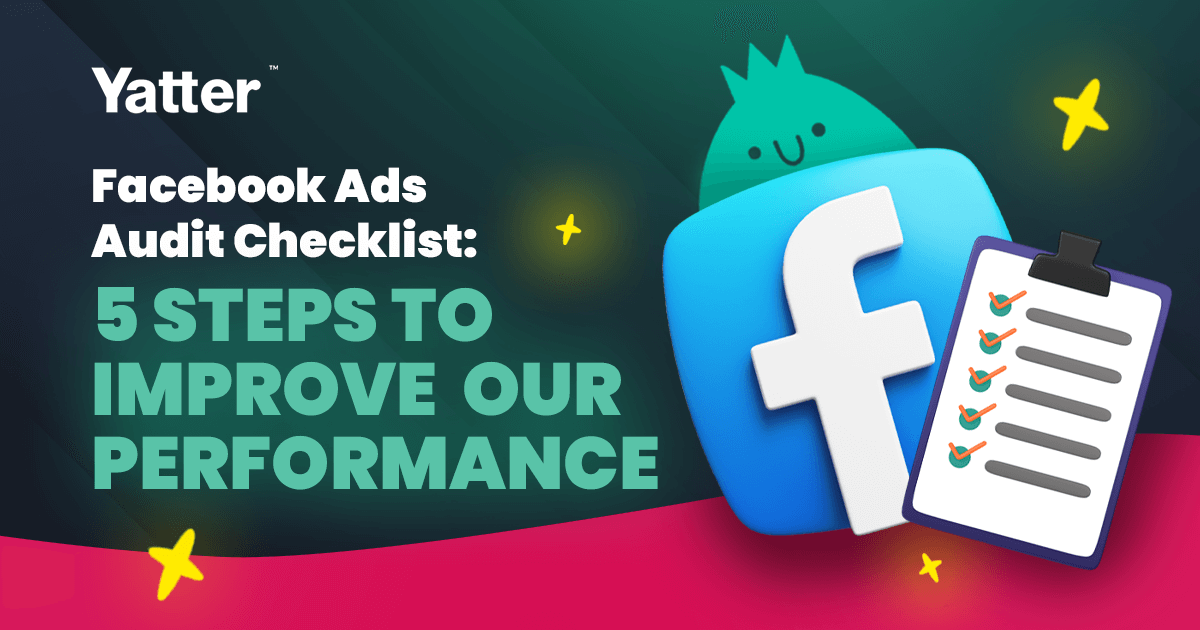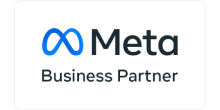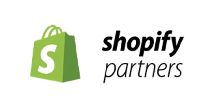How often do you audit your Facebook Ads? Do you check their success, or do you just hit publish and forget about them?
It’s important to audit Facebook Ads campaigns – if you don’t, you won’t know whether your ads are landing well with your audience. And that means they might not be performing how you’d hoped. Ultimately, your business could be wasting money on a zero return.
Carrying out a Facebook Ads audit will show you which areas you can improve to maximize your advertising ROI. But what should you be looking at?
It’s handy to have an audit checklist to refer to, so nothing gets left out when you’re evaluating and optimizing Facebook ad campaigns.
Of course, a good ad agency should keep on top of all this for you. But if you’re not sure they’re doing a good job – or you’re handling Facebook Ads yourself – here’s a 5-step checklist to help you consistently and successfully audit your own ads.
1. Set clear objectives for your Facebook Ads
The first step is to outline what you want to achieve. For the best results, your objectives should be SMART:
- Specific
- Measurable
- Attainable
- Relevant
- Time-bound
SMART objectives enable you to fairly and accurately manage your ad campaigns.
Common objectives for Facebook ad campaigns include increasing brand awareness, driving website traffic, and generating leads. Defining these properly means knowing what you’re looking to achieve, and what values will represent success for your campaign.
Give these goals values, know how you’ll measure success, and put a time limit on them to make your Facebook Ads objectives clear and workable.
2. Facebook Ads account structure and organisation
The next step is to make sure your ad structure is well organised so you’re addressing the problem logically and rigorously. Otherwise, your results won’t mean much, and the learnings will be difficult to apply to future campaigns.
Here’s how to create an organized Facebook Ads account structure:
Campaign level:
Create campaigns aligned with your SMART objectives and give each a clear name so you can distinguish them easily.
Ad set level:
Set up multiple ad sets within each campaign. These will be used to target different audiences or to test variables. Ad sets help you define your audience by characteristics such as age, gender, or location.
Ad level:
Create different ads within each ad set to experiment with creative elements and optimise performance. This will help you understand whether an audience responds better to one message or another, or which of two graphics appeals to them most.
You’ll want to mix up the following – copy, imagery, video, hooks (i.e. what makes someone stop scrolling and pay attention).
It’s rare you’re ad is going to be perfect first time round, it’s all about the testing and the more variations you create of your ad, the more you can see what works best.
Ad naming and organisation:
Use descriptive names and consider a consistent naming convention for easy identification – at-a-glance names for each campaign will make it simpler to monitor and interpret the outcomes your ads bring.
Sounds basic, but honestly this one thing will save you so much time!
Audience segmentation:
Divide your target audience into segments and create separate ad sets for each group.
For example, if you’re in the health and fitness space, you may have an audience that’s motivated by building strength, and another that cares more about stamina or core muscle tone. You can create Facebook ad sets to appeal to each of these.
For example, at Yatter we have been working with an e-commerce parts company within the United States, and we use the following audience segments:
- DIY interests
- DIY magazines
- Homeowners
- Parents
- Home magazines
- DIY brands
This helps us to effectively manage the campaigns by sending only relevant ads to the right audience, reducing ad spend and increasing conversions.
Testing and optimisation:
Conduct A/B testing for your Facebook Ads to discover what works best for your target audiences.
For our fitness example, does your audience respond better to a ‘before-and-after image’, or just an ‘after’? Are they motivated by a weight-lifting goal, a distance goal, or a dress size goal? Examine the success of each ad so you can adapt them accordingly.
Monitoring your performance metrics enables you to allocate more budget to high-performing ad sets, leading to a better return on your Facebook Ads investment.
Ad account structure:
If you have multiple audiences on Facebook, things can begin to feel confusing and unwieldy. Consider separate ad accounts for better organization and access control.
Tracking and measurement:
Keep an eye on everything that’s happening with your Facebook Ads. Implement tracking methods like Meta Pixel, set up custom conversion events, and regularly review performance metrics. These are important because without regular evaluation, your ads could be underperforming and letting you down.
Remember – you can customise this structure to suit your specific needs. Using performance data and audience insights, assess and refine your account structure to give you the best outcomes.
3. Targeting and audience segmentation
Refining your target audience means you can reach the most relevant and engaged audience. And in turn, that means improved results. So instead of a scattergun approach, evaluate your target audience based on demographics, interests, behaviour, and relevance. The more specific you can be, the better.
Facebook has many built-in features to help with audience segmentation, such as the custom audiences feature. You can target customers who have already engaged with your brand. This is a great way to re-engage people who already have brand awareness.
Once you’ve got data about who your best customers are, you can also easily find lookalike audiences. This is where Facebook pushes your ad to people with similar characteristics to your current audience.
The retargeting feature is another handy tool to show your ads to people who previously engaged but didn’t convert. It’s another opportunity to show them your brand and continue to raise awareness.
4. Ad creative and copy
Ads on Facebook need to grab your audience’s attention. Fast.
Facebook users are bombarded with ads, so you need something that will stand out and stop the scroll. Compelling ad creative and persuasive copy will pique your audience’s interest and drive engagement. But bland, soulless ads will have them scrolling past…
With Facebook Ads, you can share your creative in different visual formats. The choice you make will depend on your audience and goals.
- Static images – showcase products, before and after results, lifestyle images, or overlay text to your image
- Video – add movement, show product functionality, and share user-generated videos
- Carousel posts – share multiple images and links, for example showing multiple items on sale
Keep an eye on your best (and worst) performing ad visuals, headlines, ad copy, and CTAs to see what’s working (and what to avoid doing again). And remember: you may need to tweak and revise these constantly to keep response rates high.
5. Ad performance analysis
It’s no use putting an ad into the world if you don’t check how it’s performing. Audit your ads by monitoring and analysing key performance indicators against your SMART objectives to evaluate the effectiveness of your Facebook Ads.
Here are a few handy metrics to check against when you’re reviewing your Facebook ads:
- Click-through rate (CTR)
- Conversion rate
- Cost per acquisition (CPA)
- Return on ad spend (ROAS)
- Don’t forget: ad performance should be checked continually.
Tracking over time will help you identify trends or patterns so you can make tweaks to optimise your Facebook Ads performance. It’ll also give you key information to help you optimise future ad strategies.
Improve your Facebook Ads performance to maximise ROI
Facebook Ads can bring incredible ROI – if you do them well. And the only way to check that they’re working for you is to carry out regular checks. Monitor performance in every campaign to see what your audience responds best to, and discover ad trends that’ll help your future Facebook Ads campaigns.
Auditing is time-intensive work. If you have a good Facebook Ad agency, they should be doing this on your behalf. If your ads aren’t bringing the returns you need – or you think they could be doing better – book a free Facebook Ads audit with Yatter.






